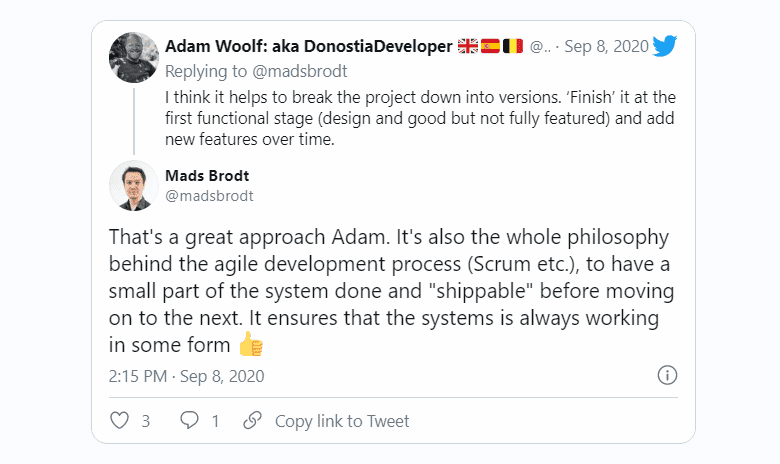Modern-day software solutions are not “one-size-fits-all” products. Even the term ‘software’ is not specific and has a broad spectrum of applications. The custom software landscape is rising, with entrepreneurs wanting to create a better customer experience.
Technologies like Artificial Intelligence, Internet of Things, AR/VR, and Machine Learning have become commonplace as integrations. However, such innovative integrations need robust execution of software development projects.
Although all custom software projects are different, execution remains the prime concern for many businesses. From a decision-making standpoint, organizations need to consider factors such as:
- Market-fit product
- Software features
- Deployment platforms
- Development planning
- Budget planning
- Execution plan
Every project has budget planning to tackle the cost of custom software development. Organizations create budget plans to reduce execution constraints, but estimating custom software development costs is not that simple.
Say you have an innovative software startup idea, and you want to find out about the development cost for your product. You look for case studies to get an estimate and come across a post on a social platform, where you get a generalized range of somewhere between $2000 and $2000000. Baffled, aren’t you?
“Do custom software development costs around two million dollars?” you may ask.
Well, the answer is yes and no. It is just a rough figure given by one of the experts responding to such a query. Many comments emphasize the different aspects of custom software development and its effect on cost.
Here, we will have a comprehensive take on different factors that affect custom software development cost with some insights on its average price.
But, before we do that, let’s have a quick look at “what is custom software?”
Editor’s Note – If you are struggling with having a precise estimate cost for your software, reach out to our custom software development experts and share your requirements.
What is Custom Software?
Custom software is a user-specific product, different from the usual off-the-shelf software like Microsoft Office, that caters to a generalized user base. It has features that are in line with your business requirements. For instance, a tailor-made banking desktop application or ERP software falls under custom software.
A custom software development process includes requirement analysis, building the code, testing the software, and deployment. The bespoke software offers a personalized experience for users, lowers the development cost, and increases ROI. What’s more, scalability in custom software is better than readily built software.
Now that we know the basics let’s get on with the factors that affect custom software development costs.
Factors Affecting the Cost of Custom Software Development
To get clarity on the expenditure, you must know the factors that impact your development cost. For example, a realtor calculates construction costs based on design specifications, raw materials, labor, documentation and validation, and finishing work.
Similarly, building custom software for your organization is no different. In this section, you’re going to see a list of critical considerations that shape your investment and their impact on your project lifecycle.
#1. Type of Platforms
Popular platforms that you can deploy custom software are:
- Windows
- Mac
- Linux
- Unix
- Android
- iOS
- Web
The cost of custom software development may vary depending on the type of platform you choose. For example, Android is one of the most popular venues in the current market as it’s captured other device markets like laptops, streaming tools, wearables, and even smart appliances.
But when you choose a massive platform like Android, the scalability escalates. You need a robust software structure to have efficient performance, requiring more development efforts.
Let’s understand it in terms of a business perspective. A firm deploys custom software on, say, Android, and then they want to have the product on other platforms like iOS or Windows.
The deployment of software in different native environments will need separate development teams. Multiple development teams will cost you higher than a single dedicated team.
At the same time, a cross-platform development process reuses the code in different native environments. So, you don’t need to have different development teams for each platform. Code reusability ensures rapid development, which in turn reduces the cost of custom software development.
Furthermore, the tools employed to deploy software also affect the cost. Say you choose automation for continuous integration and deployment, the initial price may be high, but eventually, you may see a decline in the overall investment.
#2. Development Approach
From choosing a framework to following a development approach, your project plan includes modules that help you paint a picture of the execution strategy and budget. Once that’s done, you’re going to need a development approach that is fast, reliable, and has fewer errors. Agile development is one such approach with an iterative process.
According to a report, 95% of respondents said their organization used Agile development, where tasks are distributed across sprints to address feedback from stakeholders and developers alike.
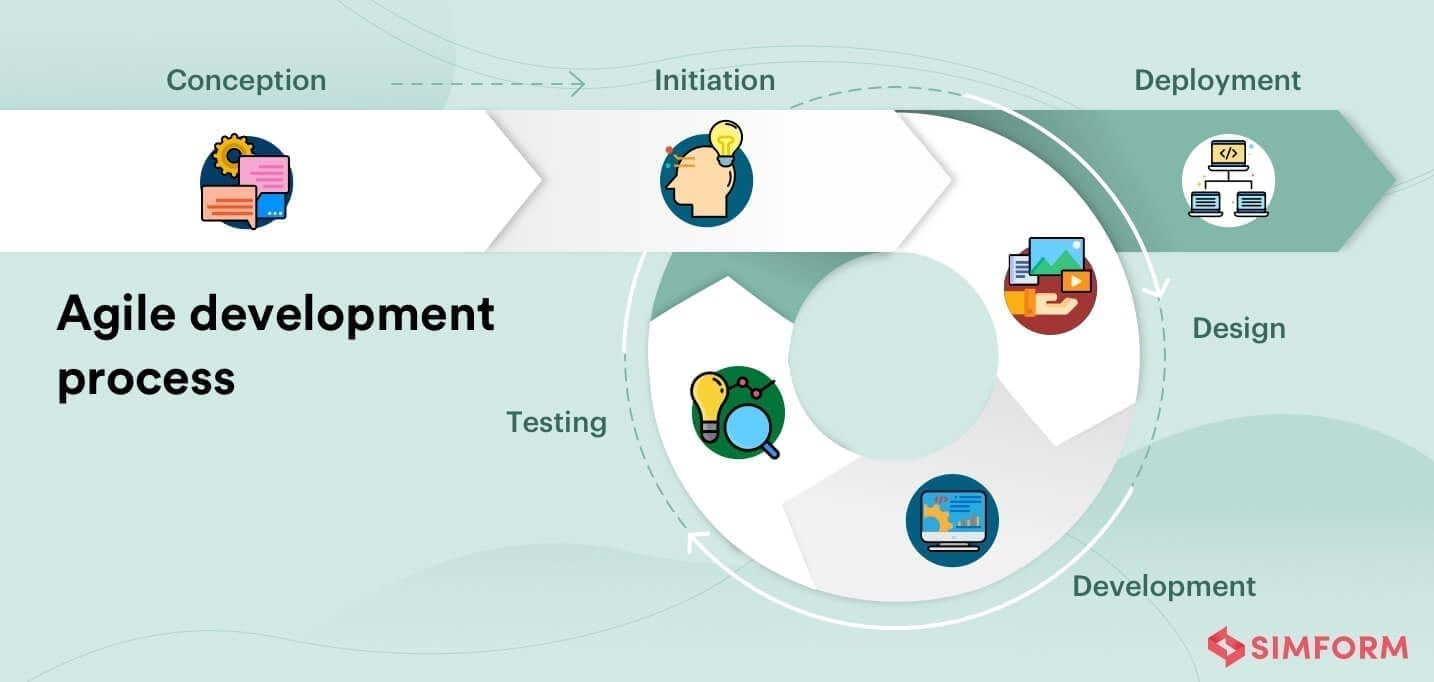
What’s more, Agile development allows for a cost-effective development lifecycle. Here’s how:
- The initial stage allows you to create a roadmap to clarify tasks, allocation, and iteration metrics, reducing team effort and technical debt.
- prototyping gives stakeholders a peek into the product, which provides room for improvisations before the product hits the market.
- Iterative sprints ensure every version integrates with user feedback to minimize development time and bugs.
Fact: Scrum and Kanban are some of the most popular Agile methodologies in the market.
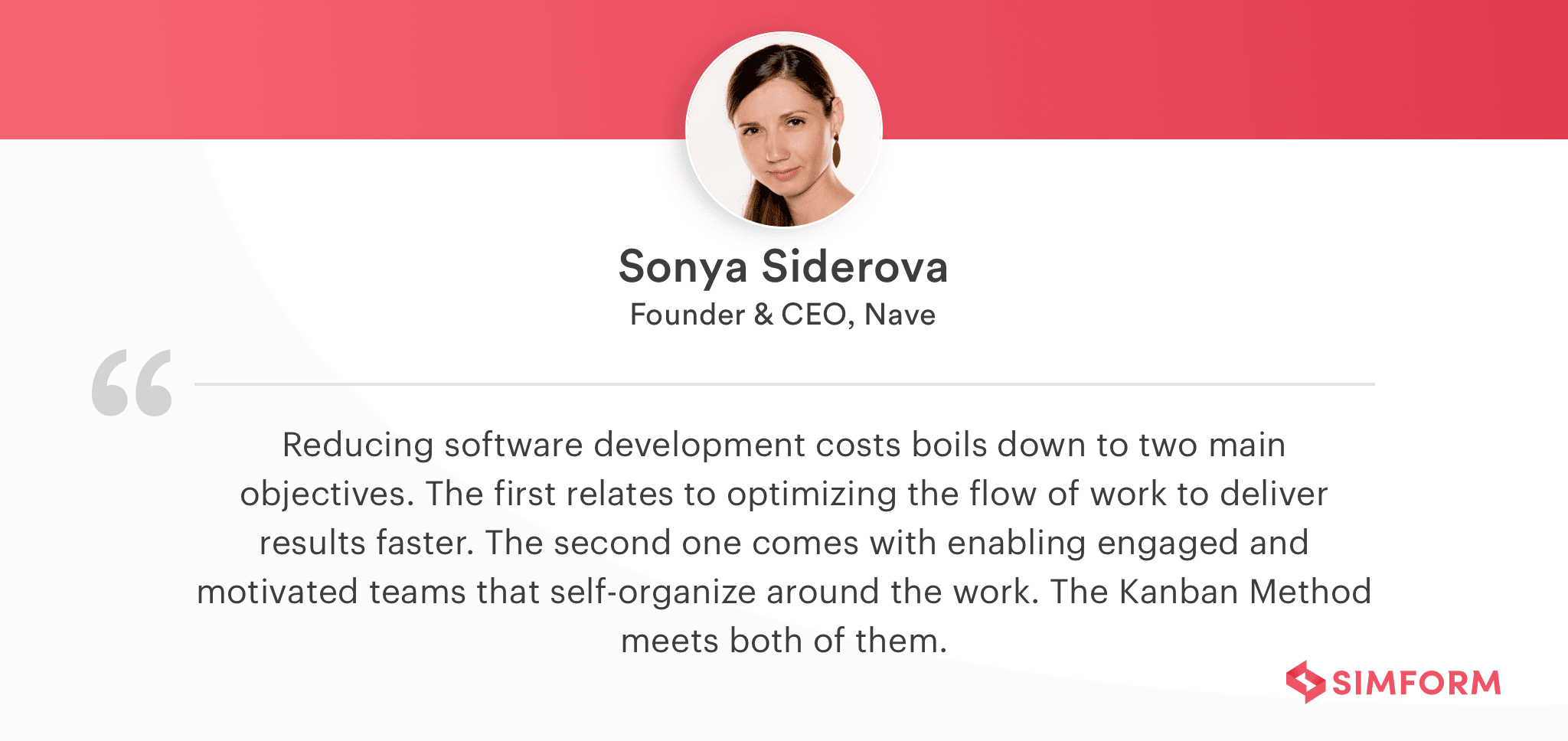
#3. Time-to market
Time-to-market is a broad term, and there are several facets of the development process that affect the timeline. From the scale of software to the features it has, everything affects the timeline. To simplify this, we have identified three scenarios that multiple your time-to-market:
- When there are too many features
- When there are too many features and some of them could be complex
- When apps with fewer features need more time because of its complexities.
In each case, the time-to-market is high. It is a big concern for startups and enterprises because you never know when your big idea becomes stale. So, hitting the market fast becomes a priority.
So, how to reduce time-to-market without compromising on features?
Let’s take an example of a luxury shoe brand, Stubbs, and Woottons. The firm wanted to replicate their physical store online so consumers could personalize their shoes. Creating a digital front with different fabrics, motifs, and designs were not simple and needed more development time.
So, there were a plethora of features that needed extensive development. As the number of components was high, the firm decided to go with an MVVM(Model-View-View-Model) architecture. The MVVM approach uses data binding to render event-driven architecture. MVVM becomes a good case for building apps with less code.
The developers have to use RxSwift libraries to add options like fabric, motif designs, and colors in the app. MVVM with Swift is an excellent architecture to follow for high-quality code. But, it can increase time-to-market. Hence, the project’s time-to-market often depends on the type of architecture you choose for development.
Here, you can devise a development plan with MVP to reduce the time-to-market. It is more of an initial version of your product that can have essential features only about which we will discuss in the next point.
#4. MVP requirements
If you’re looking to test your products before they hit the market, the Minimum Viable Product (MVP) is a great way to receive valuable feedback.
Say you want to build a music streaming software that plays music at a preset time. Now, although this seems like a fantastic idea, you may still want to find out how users react to this addition. So, what you do is create a beta version and release it. An MVP may take up to 20-40% of your total development cost, but it’s worth the investment as user reviews can give you a thorough understanding of your product’s usability. Moreover, it gives you some extra time to work on the complex features of your application.
As quoted in the tweet above, a “shippable” form of the software not only improves time-to-market but offers valuable feedback on its functionality.
#5. Complexity of Software
It’s only natural to be confused about testing complex or the essential features first or saving them for later updates.
But here’s the thing: consider a software application with features that need heavy computations and processing power.
The software’s backend needs to be robust, which may cost higher than the average price of custom software development. The complexity of this software also depends on the different layers of users added to test its usability.
Furthermore, it’s also challenging for businesses to equip multiple software into their system at a given time. Software tailored for one’s unique needs solves this problem by offering scalability, flexibility, and maintainability.
Creating a custom software that has high functionality and a less complicated architecture reduces cost. One significant change that minimizes these intricacies is focusing on functional value rather than aesthetics. It cuts costs and diverts efforts to develop essential functions.
Additionally, minimal aesthetics lessens coding effort as it facilitates software maintenance across different versions.
#6. Design requirements
Giving your software a cosmetic enhancement with creative designs and animations is always a great idea. After all, it keeps users engaged. That being said, the design has the potential to up your development efforts, which may spike your cost of custom software development.
Being purveyors of design-centric engineering services, we highly recommend crafting visually appealing user interfaces. Still, in the same vein, we’d also ask you to choose an elegant yet simple design. One way to go about this is to create a design that quickly and efficiently navigates users to your services.
#7. Integrations of Systems
The integration of third-party APIs helps you to add more functionality to apps. APIs or Application Programming Interfaces are a set of instructions that help different systems to interact. Now, the problem begins when you integrate third-party APIs. Because of the compatibility issues, integration costs can increase.
Let’s take an example of instant messaging integration. If you want to integrate Whatsapp into your application, Then there are two ways to do it. One is to set up a docker container, and another is to use AWS(Amazon Web Services) solution. For the first solution, you will need to create containers using the developer’s guide provided by Whatsapp. It can not only increase the development effort but cost also.
Understanding the compatibility of third-party APIs with your custom software and the cost of integrations becomes quintessential.
#8. Database Migrations
If not planned well, database migration can cost you a fortune. However, you can steer clear of this undesirable cost by creating a backup of the existing data, among other database migration practices. It reduces the risk of losing vital data during the migration.
Here’s where a software development company can come to your aid! It helps you seamlessly move your data between systems, formats, locations and includes data conversion, validation, profiling, cleansing, and quality assurance. It sounds complicated, doesn’t it? Speak to an expert!
Now that we’ve learned about several aspects that affect custom software development costs let’s get on with the price estimation and average cost of custom software.
5 Steps to Determine the Cost of Custom Software Development
#1.Choosing the Right Software
Should we go for an off-the-shelf A.K.A boxed product or custom software?”– this is among the first few burning questions faced by many startups and enterprises. When you juxtapose the two products, a boxed software seems like a no-brainer, but, hey, there’s more than what meets the eye. What makes this choice tricky is the cost and the amount of time, effort, and resources it demands. Let’s look at this objectively:
Adobe PDF, for one, is an off-the-shelf software loved by millions of users. It comes with many tools like file conversion, PDF editing, e-Signatures, among others, and covers almost all features needed to create a document. But, think of software to track productive hours for employees in an organization with custom features like visual tracking, time logs, employee logins, automatic log hours recording, and customized insights into productive hours.
It can be challenging to find a product that exactly matches these unique needs. You could choose a boxed product close to these specifications, and it may even seem like a boon, but what happens when you want to extend the capabilities of this system? Integrations, maintenance, upgradations, training, and the list goes on.
Be rest assured, the cost of developing custom software for your unique business is upfront, with no hidden costs to haunt you over time.
#2. Hiring a Suitable Development Team
There are two popular ways to engage developers in software development:
- In-house developers
- Off-shore tech experts
Since our current focus is on costing, off-shore developers ace this race.
When you hire an in-house developer, there are several grounds like employee insurance, productivity metrics, perks, allowances that you may need to cover. No biggie, you may say. But what happens when you migrate from one technology to another? You may choose to hire new personnel or train your existing employee. Either way, you’re bound to incur a significant investment for new resources.
Conversely, hiring a dedicated team of offshore software developers does not come with such costs. You get to work with technology experts who collaborate with your team to take your project to the next level.
#3. Picking Features for the MVP
Your product features are the magnets that attract users, so it becomes imperative to level up your efforts. If your goal is to maximize ROI through features, setting priorities is paramount.
While defining your project requirements, you can bifurcate your features into two categories: high priority and low priority. Your application’s primary features can be your top priority, whereas secondary characteristics can take a back seat when developing an MVP. It removes the stress off your team and scales down your investment and time-to-market.
#4. Considering Risks for Future Developments
When you build a large-scale product like Slack, you need to assess the risks involved. So, when the CTO of Slack, Cal Handerson, was asked whether the 2013 launch had shortcomings? Here is what he has to say,
”So I was saying, to begin with, we didn’t build it thinking that we’d have more than 10 million daily active users or beyond. For nearly any kind of software that any company is building outside of a few giant companies, the essential thing that you need to do is find that product-market fit quickly. ”
The repercussions of neglecting the magnitude of your scalability can cause more damage than you can imagine and, in some cases, can cost you users’ credibility.
#5. Impact of the Funding Type
While small-scale software has a simpler architecture with low-cost development, enterprise software comes with a laundry list of features requiring a boatload of investment. This difference is what influences the cost of development for both software.
Enterprise-grade software needs substantial funding resources, and here’s where the concept of grant money comes in.
With investors like non-profit organizations (NGOs), government authorities, and other such firms, grant-funded software becomes highly scalable. Take the example of Panasonic’s Toughbook. Trinidad and Canon wanted to create mobile technology for their first responders. However, the most significant barriers they faced were funding for devices and establishing technology development.
Panasonic helped the two Colorado state cities to create an economic grant proposal. If you plan to develop custom software, funding majorly affects the cost of custom software development. The right amount of funds allows you to procure premium resources and hire in-house or offshore experts.
Average Cost of Custom Software Development
Let’s discover different pricing models for the average cost of custom software development.
Based on Software Type:
There are three types of software: enterprise, mid-market, and small scale. Each type affects the pricing of development differently based on the level of software.
Enterprise-level custom software needs quality developers and may range between $200,000 and $100,00,00,000. In comparison, mid-market software may cost you about $45,000 to $ 60,00,000, whereas the price of a small-scale software may range between $10,000 and $5,50,000.
Based on Work Hours
The hourly pricing model varies depending on the location of your technology partner. For instance, the average cost of custom software in the UK differs from that of the US or other regions.
In addition to this, large-scale software owners often see a spike in their overall development cost, for these projects take more resources and time to develop. To give you a fair idea of the pricing, here’s a list of some actual average hourly rates from different regions of the world:
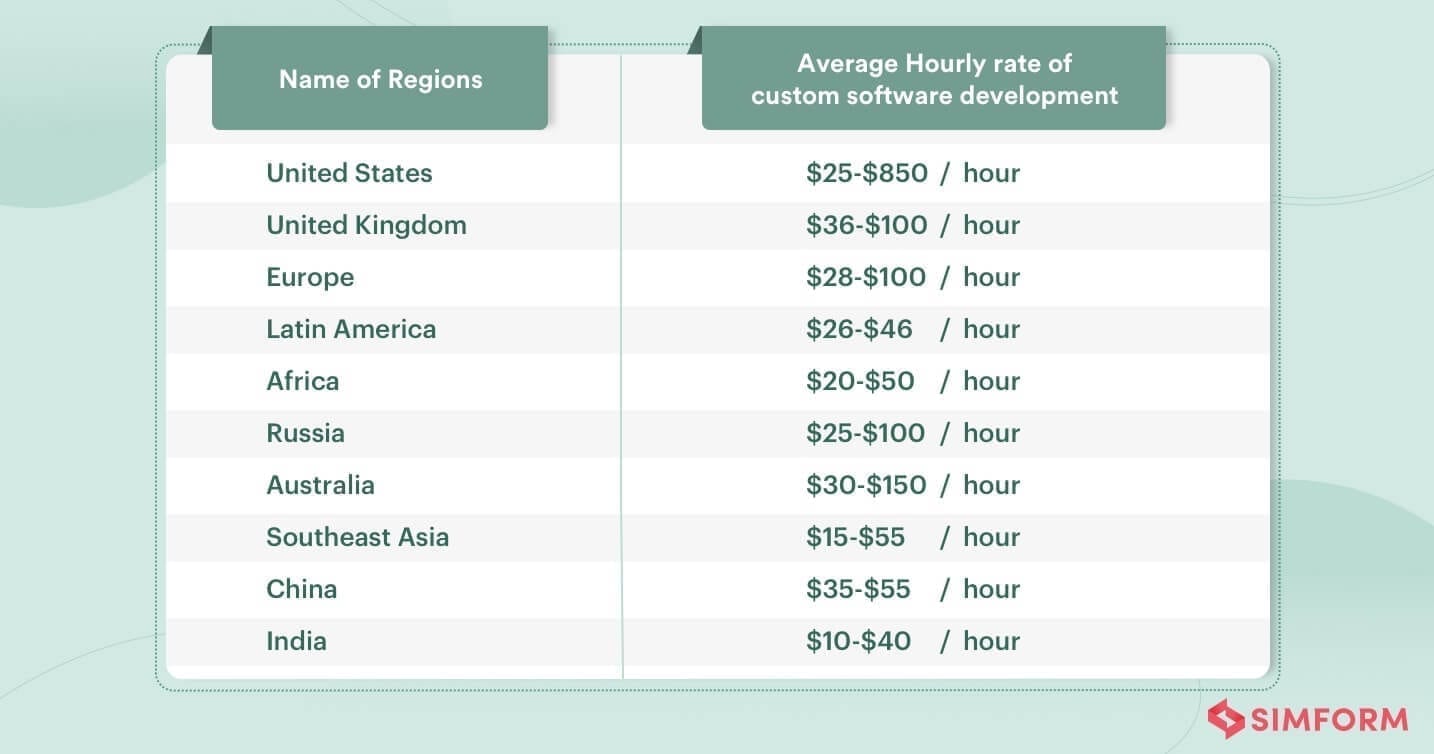
Size of the Team
The size of a development team varies for each project, but how does this change the hourly rate equation? Every software development company recruits professionals based on the size of your project. If the project is vast, they must recruit more people, resulting in higher rates.
Moreover, even if you think of hiring in-house developers, it will depend on the project type, size, and scale. Say your product needs a front-end and back-end developer, a QA expert, and a Project Manager, each costing $100 an hour. They work for 3 hours a day, and your project may take up to three months. The total cost of development will be around $ 1080000. As you can see, the cost of custom software development will be high.
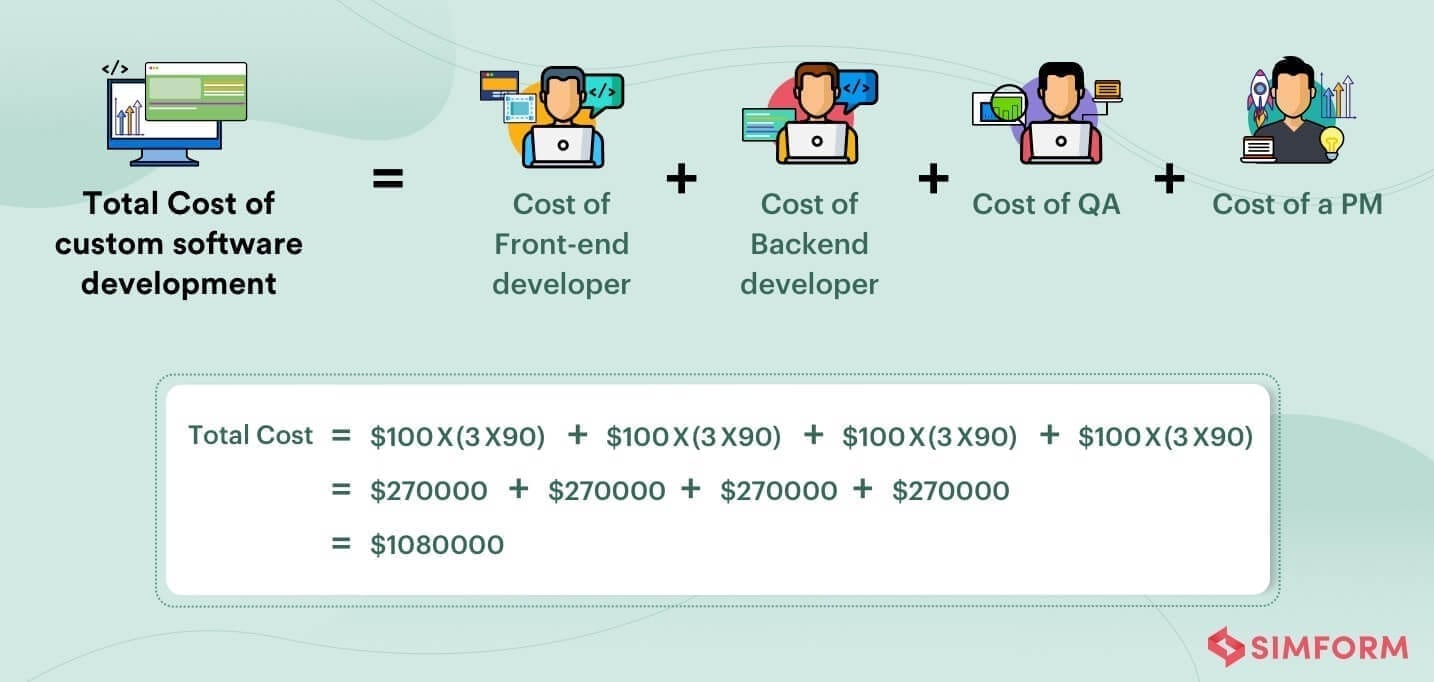
At the same time, you can choose different talents at the best prices with offshoring agencies. One of the popular approaches is to hire an extended team to reduce the average cost of custom software development. They work in conjunction with your in-house team and frees you from the hassle of recruiting
Fixed-Price Cost Package
A fixed-price cost package is an agreement between the stakeholders and the vendor. The contract covers the cost of custom software development per hour, project work statement, and a detailed payment schedule. Mostly the payment is offered in milestones after software developers receive validation from product owners.
A contract must have enough transparency to evaluate the exact cost of software development.
Request for Proposal: The Right Way to Estimate!
Request for Proposal (RFP) is an excellent practice to estimate custom software development costs. Many organizations draft RFPs for their technical partner or a vendor. The request for a proposal must have all the requirements you need for custom software. Companies can employ a practice like posting the excerpts from the RFP draft on open-source channels.
The reviews from peers and vendors on the platform can help you draw some crucial points in the final draft. Some vendors will even come up with requirements and suggestions that you might have missed. It is a strategy that will help you gauge the cost of custom software development at an early stage.
The best part about RFP is how it makes the decision-making process more manageable. The market has two types of vendors: one who offers low hourly rates than its average cost. They seem to fit right into your budget, but the real picture emerges during the development stage, where there are several hidden costs.
The other may seem costly on the paper, but they are reliable and do not cut corners to fit right into your pocket. RFP will help you choose the right vendor and estimate the cost of custom software development.
Final Thoughts
Deriving an estimate of custom software development costs is not difficult if the project planning is apt. If you request a proposal with everything in place, the vendor’s response will portray the entire picture.
One thing that clearly defines the pricing of custom software is the role of developers. So whether you hire offshore developers, in-house developers, or even a freelancer, their experience can impact the project’s success.
Now is the time for you to rethink a strategy to estimate and reduce software development costs. If you feel stuck at some part of strategizing or need any kind of help, reach out to me on Twitter or drop me a line at hardik@simform.com
